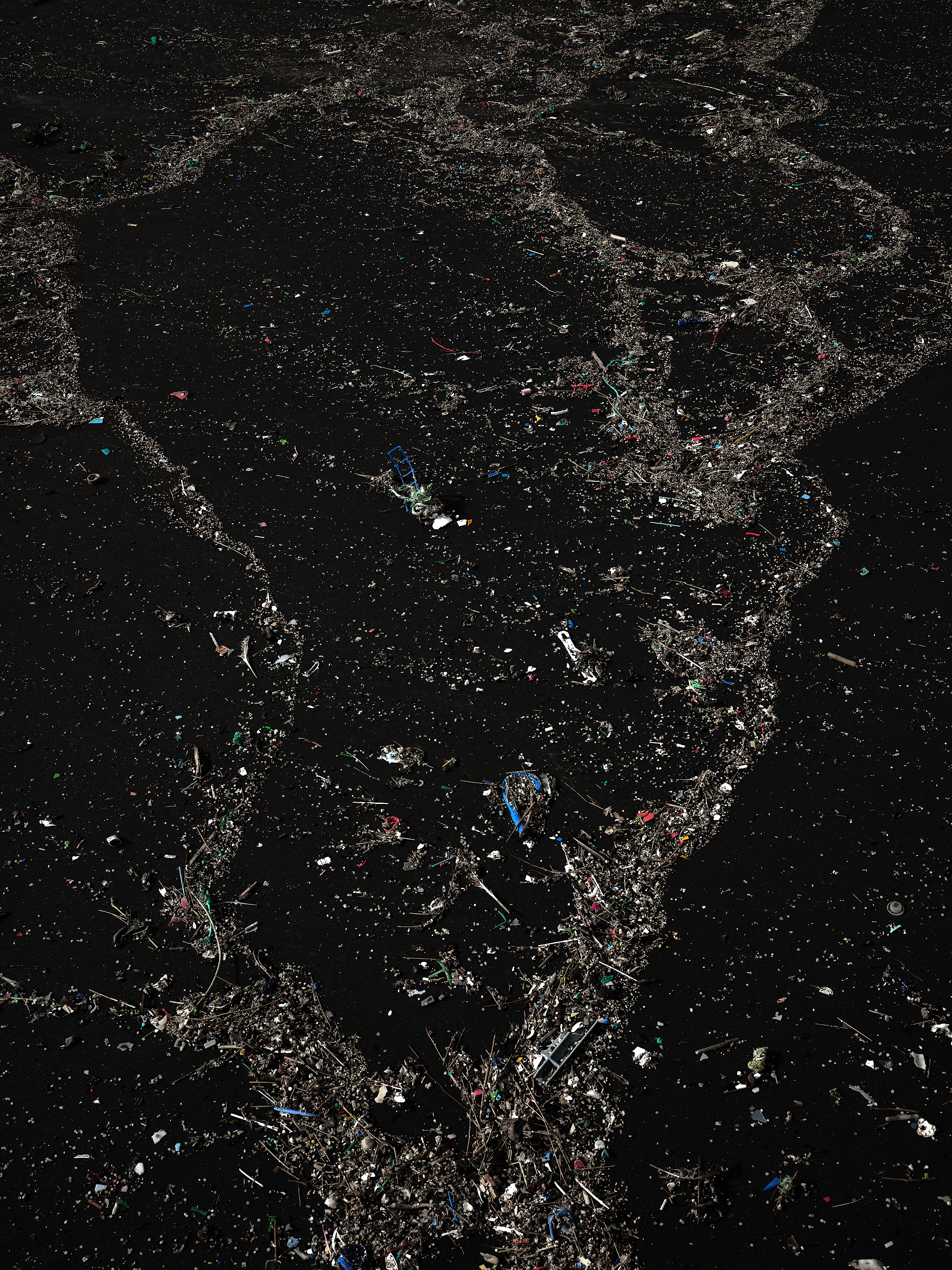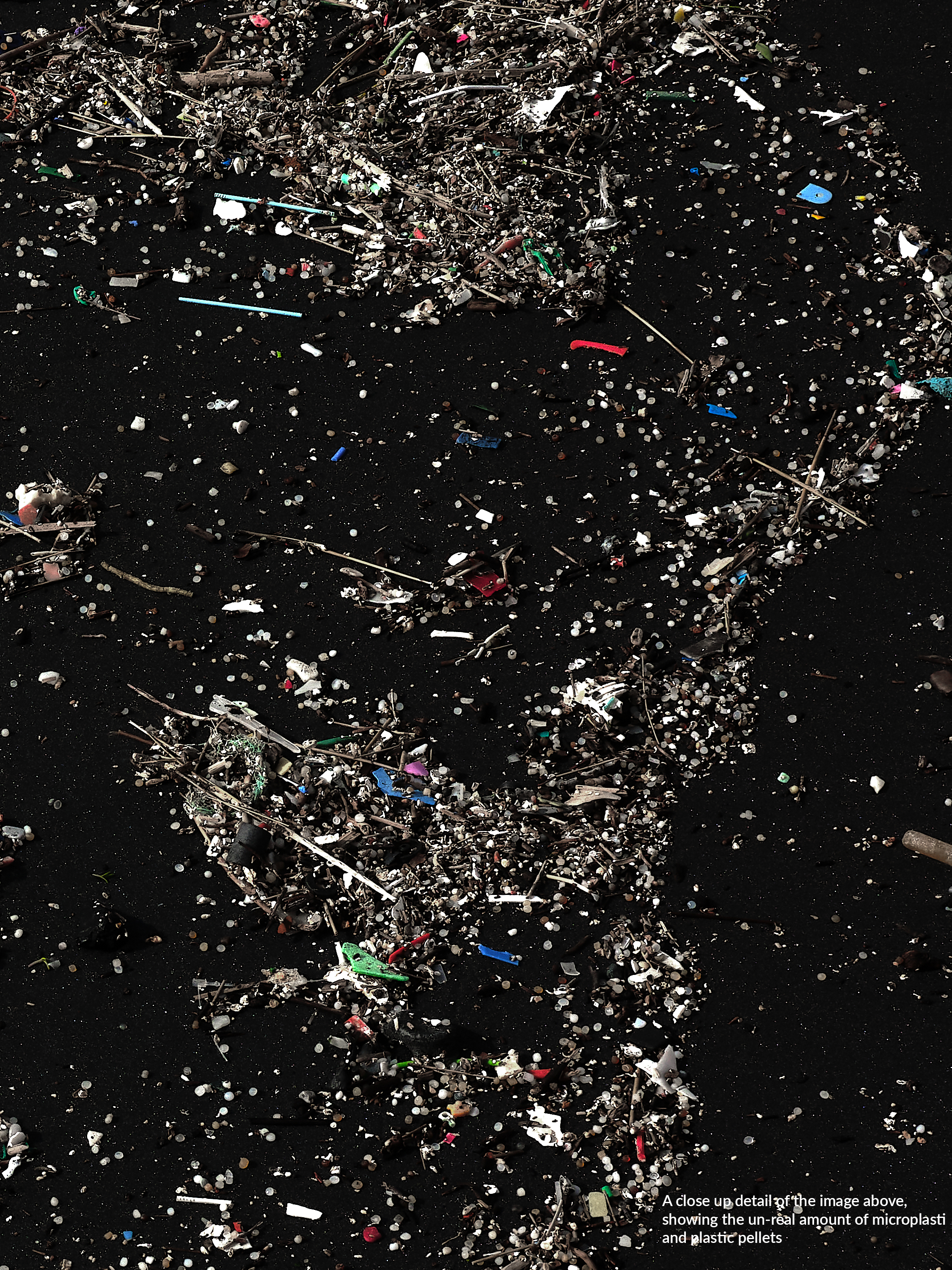
This winter, my focus has shifted from photographing big waves to tackling the plastic problem. While large swells have been almost absent in southern Portugal, the rains have been more than last years, nurturing the soil. However, these same rivers and currents have also delivered a shocking amount of microplastic to our shores.
The sight is devastating, especially at one of my former surfing beach, now marred by plastic pollution.
Microplastics on Portuguese Beaches
Lines of pollution etch their presence into the sandy canvas, trampled or
deliberately avoided by bathers, but persist as an inescapable part of
the contemporary landscape.
Captured through the lens of a medium-format camera, against an
austere backdrop of almost black sand, these images reveal their
disturbing allure during the fury of storms.
These prints serve as deceptive constellations when viewed from afar. It
is only up close that the stark reality materializes: an intricate weave
composed of hundreds of microplastics, a challenging affront to our
perception of beauty.
In an attempt to underscore the relentless degradation of plastic objects,
a second narrative emerges. Objects – once tangible and identifiable –
are deliberately photographed in motion, capturing a transient moment
in their trasforming decline.
